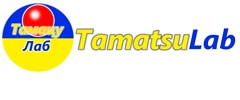Armenia
Location
It is bordered by Turkey to the west, Georgia to the north, the de facto independent Republic of Artsakh and Azerbaijan to the east, and Iran and the Nakhichevan Autonomous Region of Azerbaijan to the south.
Area
Approx. 29,700km2
Capital (approximate population)
Yerevan(1.06 million)
Business-related cities other than Yerevan (approximate population)
Gyumri(120,000), etc.
Population
Approximately 29.57 million people
Racial Composition
98.1% Armenian, 1.2% Yazidis, 0.4% Russian, 0.3% other
Language
Armenian
Religion
Christianity (Armenian Apostolic Church)
- Noravank Monastery
Culture
Armenian, its own language, is a member of the Indo-European language family. Geographical factors, literature, architecture, dance, music and many other elements are involved in Armenian culture.
- The Republic Square of Yerevan
- Tsitsernakaberd(The Armenian Genocide Museum)
- Shikahogh State Reserve
- Lake Sevan
- Dilijan National Park
- Mount Aragats
- Lake Arpi
- Black Fortress
- Alexandrapol Monument
- Dzitoghtsyan House-Museum of Social Life and National Architecture
- The Gallery of Mariam and Eranuhi Aslamazyan Sisters
- S. D. Merkurov's House Museum
- Vanadzor Botanical Garden
- Vanadzor Museum of Fine Arts
- Amberd Fortress
Education
Primary and secondary education in Armenia is free and compulsory.
- Yerevan State University
- American University of Armenia
- ARMENIAN NATIONAL AGRARIAN UNIVERSITY
- Russian-Armenian University
- Brusov State University
- Armenian State University of Economics
- Yerevan State Medical University
- National Polytechnic University of Armenia
- National Library of Armenia
- Mirzoyan Library
Overview of Modern and Contemporary History of Armenia
1915-17 ''Armenian genocide'' during World War I (the Ottoman government suspected Armenians of pro-Russian sentiments, and between 600,000 and 1.5 million Armenians were slaughtered or forced to relocate into what is now Syria)
1916 Ottoman Armenia region falls to Russian forces
1918 Republic of Armenia (First Republic) established
1920 Invaded by Bolshevik Russia, Armenia/Soviet Socialist Republic established
1922 Together with Georgia and Azerbaijan, it forms the Transcaucasian Socialist Federal Soviet Republic. become a founding member of the USSR
1930- Stalin's Great Purge. Industrial development through planned economy
1988 After Glasnost, a dispute with Azerbaijan surfaced over the ownership of Nagorno-Karabakh (mainly inhabited by Armenians) in the neighboring Azerbaijan territory. Earthquake kills 25,000 in northern Armenia
1989 Dispute begins over Nagorno-Karabakh
1990 declaration of sovereignty of the republic
1991 A referendum favors secession from the Soviet Union. Declaration of Independence. join the Commonwealth of Independent States
1992 Join the United Nations. embargo sanctions by Azerbaijan. Rivalry Dispute Over Nagorno-Karabakh Continues
1994 Demonstration over food and energy. Russia brokered ceasefire with Azerbaijan. Nagorno-Karabakh remains a self-proclaimed republic with armenian armies in the vicinity
2001 Become a full member of the Council of Europe. France declares in law that the 1915 Ottoman genocide and forced deportation of Armenians constitutes an act of genocide. Turkey accuses France
2008 state of emergency declaration
2009 Agreed to normalize relations with Turkey at conference in Switzerland (opposition accuses government of failing to raise issue of genocide)
2010 Parliament suspends ratification of deal normalization relationship with Turkey. Agreed to prisoner exchange deal with Azerbaijan mediated by Russia
2011 French President Sarkozy visits Armenia, urges Turkey to accept responsibility for Armenian genocide
2012 French Senate passes bill criminalizing denial of Armenian genocide. Armenia welcome. Turkey warns of retaliation
2014 Azerbaijani army shoots down an Armenian military helicopter. tension rises
2015 Canceled the 2009 agreement with Turkey. Pope Francis recognizes Armenian massacre as genocide as Vatican. Turkey protests
2016 The German parliament adopts a resolution declaring the World War I "Armenian Genocide" a genocide. Clashes on border with Azerbaijan
2018 Armenia Revolution (The Velvet Revolution)
2020 Military conflict with Azerbaijan intensifies over Nagorno-Karabakh
Politics
It is a parliamentary democratic republic. The president is the head of state who primarily performs representative functions. The Prime Minister is the head of government and exercises executive power. The legislative branch is unicameral.
- Residence of the President of the Republic of Armenia
- National Assembly of the Republic of Armenia
- The Constitutional Court of the Republic of Armenia
GDP per capita
$4,527
Economy
It relies heavily on investment and support from Armenians abroad. GDP per capita is the lowest among the three South Caucasus countries.
Asia
People's Republic of China, Singapore, Israel, Taiwan, Hong Kong, South Korea, Malaysia, India, Turkey, Saudi Arabia, Kingdom of Thailand, Philippines, Vietnam, Sri Lanka, Indonesia, Iran, Pakistan, Bangladesh, Kazakhstan, Azerbaijan, Uzbekistan, Georgia , Cambodia, Japan , Myanmar, Laos, Mongolia, Bhutan, Nepal, Kyrgyzstan, Tajikistan, Turkmenistan, Afghanistan, Iraq, Armenia, Syria, Lebanon, Jordan , Kuwait, Bahrain , Qatar, United Arab Emirates, Oman, Yemen, North Korea, East Timor, Brunei, Maldives
-- Return to World Region Information --


